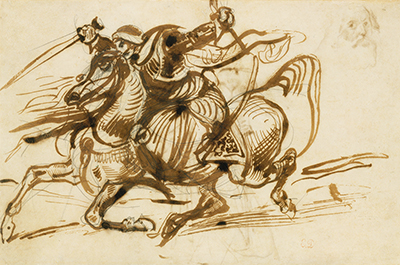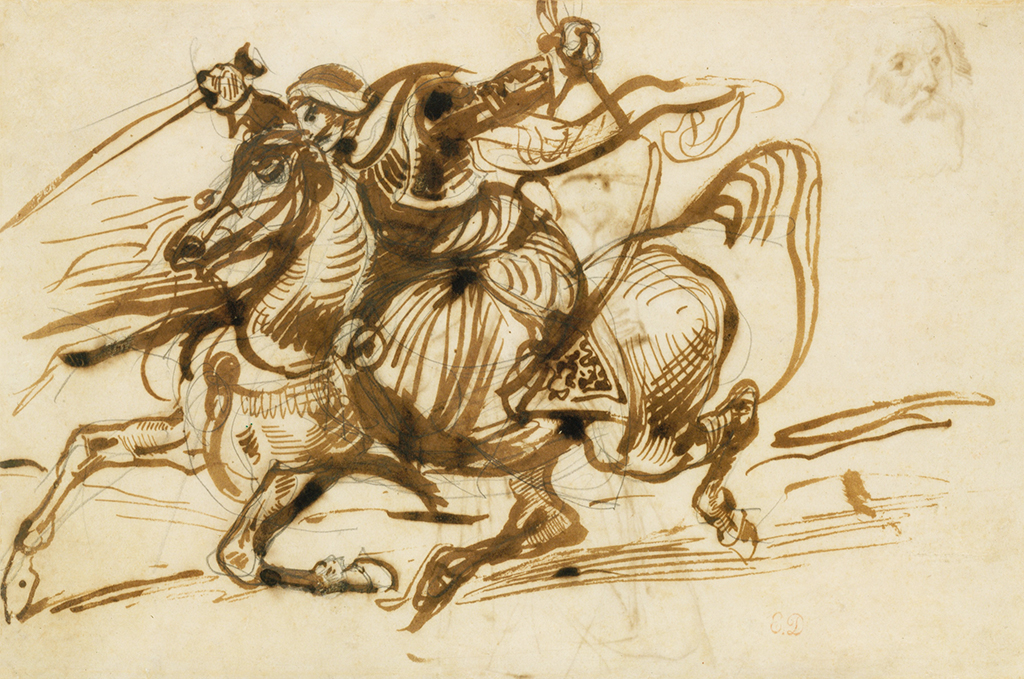The topic of The Giaour came to Delacroix's attention from the writings of Lord Byron, who was one of his favourite authors. The artist then produced a number of drawings and paintings based on The Giaour, a Fragment of a Turkish Tale, a poem from 1813.
This drawing is dated at 1824-1826. Hassan murders one of his own slaves because they are close to the soldier featured here, who therefore races upon horseback to seek revenge. Love and tragedy were common themes within Delacroix's career, as well as the Romanticist movement more generally. He produced three paintings based on this theme as well as many study drawings, such as the one featured here. On the back of this drawing was another artwork titled, Study of the Head of an Old Man. Being study pieces, he would often use both sides for his preparation work, and on many occasions they would be together in a small sketchbook that could be carried around on his travels, meaning he could work whenever he wished.
He would depict the moment of battle within his paintings and at this point both the horses and their masters would be in aggressive, unnatural positions which he therefore wanted to practice with sketches many times prior to beginning the painted versions. He would often use pen initially before adding strokes of wider brushes that would leave a more definitive look in the key areas of the composition. In this case he actually works the wider brush over most of the scene, leaving a bold looking artwork which will be easier to appreciate from a distance. The lighter touches are used for detail on the horses neck and backside, helping to suggest contours and shadow.
The three paintings were produced many years apart, namely in 1826, 1835 and 1856. You will find clear similarities and connections between the earlier drawings and the later paintings, indicating that he made good progress in the earlier stages and felt contented with these early stages, otherwise he would have done many more or amended directly on canvas when working later in oils. The artist would spend much time researching traditional clothing as well in order to bring these inspiring poems to life in as accurate a manner as possible. He would tend to pull together as many publications as possible that describe these different periods and cultures in order to correctly display figures depending on the theme of each artwork.





